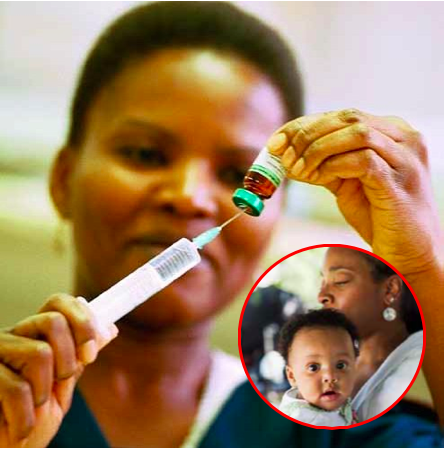Vaccinations help children beat diseases
Vaccinations help children beat diseases sadminOne of the best ways parents can protect their children is to make sure they get vaccinated against a range of diseases.
 Vaccinations help eliminate diseases that once injured or killed thousands of children. Babies get protection against certain diseases from the antibodies of their mother’s placenta and build up resistance against diseases as they become exposed to them.
Vaccinations help eliminate diseases that once injured or killed thousands of children. Babies get protection against certain diseases from the antibodies of their mother’s placenta and build up resistance against diseases as they become exposed to them.
However, this protection is not enough when it comes to certain diseases and to protect against these, children need to be vaccinated.
One example of the great impact vaccines can have relates to polio - a highly infectious disease caused by a virus that invades the nervous system and can cause total paralysis in a matter of hours.
As a result of the Global Polio Eradication Campaign, “polio cases have decreased by over 99 per cent since 1988, from an estimated 350 000 cases then, to 650 reported cases in 2011”, according the World Health Organization.
What are vaccinations?
Vaccinations are a way of creating immunity by injecting certain weakened diseased bacteria or viruses into the body. The immune system responds by producing antibodies to prevent any future infections of the same disease.
You can have your child vaccinated at your local clinic, paediatrician or community health centre. Vaccinations are free of charge.
When you take your child to a clinic or paediatrician for vaccinations take your Road-to-Health Chart with you. This will be given to you when your baby goes for his or her first immunisation. All of the baby's health details are recorded on this chart such as birth weight, height and the vaccinations the baby has had.
Keep the chart in a safe place, as you will need it when your child goes to primary school.
Are there side effects?
“Vaccines will involve some discomfort and may cause pain, redness, or tenderness at the site of injection but this is minimal compared to the pain, discomfort, and trauma of the diseases these vaccines prevent,” according to the Centers for Disease Control and Prevention.
The area where the injection has been ad- ministered may bleed slightly. Should this happen dab on petroleum jelly to prevent bleeding and soothe the area.
If your child shows severe signs and symptoms of fever, convulsions or allergic reaction consult your doctor immediately.
Types of vaccines
|
Age of child |
Vacccine needed |
How and where is it given? |
|
At birth |
BCG Bacillies Calmette Guerin |
Right arm |
|
OPV (O) Oral Polio Vaccine |
Drops by mouth |
|
|
6 weeks |
OPV (1) Oral Polio Vaccine |
Drops by mouth |
|
|
RV (1) Rotavirus Vaccine |
Liquid by mouth |
|
|
DTap-IPV/Hib (1) Diphtheria, Tetanus, acellular Pertussis, inactivated Polio Vaccine and Haemophilus influenzae type b combined |
Intramuscular/Left thigh |
|
|
Heb B (1) Hepatitis BVaccine |
Intramuscular/Right thigh |
|
|
PCV7 (1) Pneumococcal Conjugated Vaccine |
Intramuscular/Right thigh |
|
10 weeks |
DTap-IPV//Hib (2) Diphtheria, Tetanus, acellular Pertussis, Inactivated Polio Vaccine and Haemophilus influenzae type b combined |
Intramuscular/Left thigh |
|
|
Heb B (2) Hepatitis BVaccine |
Intramuscular/Right thigh |
|
14 weeks |
RV (2) Rotavirus Vaccine* |
Liquid by mouth |
|
|
DTap-IPV//Hib (3) Diphtheria, Tetanus, acellular Pertussis, Inactivated Polio Vaccine and Haemophilus influenzae type b combined |
Intramuscular/Left thigh |
|
|
Heb B (3) Hepatitis BVaccine |
Intramuscular/Right thigh |
|
|
PCV7 (2) Pneumococcal Conjugated Vaccine |
Intramuscular/Right thigh |
|
9 months |
Measles Vaccine (1) |
Intramuscular/Left thigh |
|
|
PCV7 (3) Pneumococcal Conjugated Vaccine |
Intramuscular/Right thigh |
|
18 months |
DTap-IPV//Hib (4) Diphtheria, Tetanus, acellular Pertussis, Inactivated Polio Vaccine and Haemophilus influenzae type b combined |
Intramuscular/Left thigh |
|
|
Measles Vaccine (2) |
Intramuscular/Right arm |
|
6 years (Both boys and girls) |
Td Vaccine Tetanus and reduced strength of diphtheria Vaccine |
Intramuscular/left arm |
|
12 years (Both boys and girls) |
Td Vaccine Tetanus and reduced strength of diphtheria Vaccine |
Intramuscular/left arm |
* Rotavirus Vaccine should NOT be administered after 24 weeks Source: Department of Health
References
Centers for Disease Control and Prevention: http://www.cdc.gov/media/subtopic/matte/pdf/ CDCFiveReasonstoVaccinateYourChild.pdf
KidsHealth: http://kidshealth.org/parent/infections/immunizations/vaccine.html
World Health Organization: http://www.who.int/ mediacentre/factsheets/fs114/en/